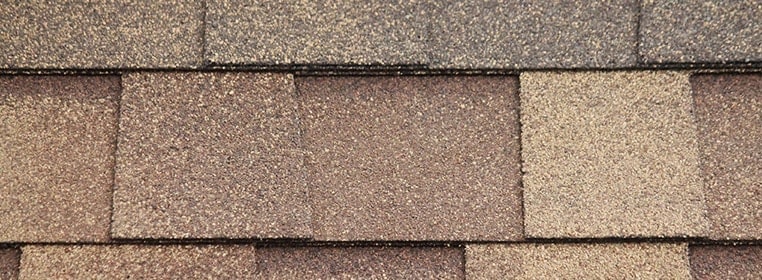Pros and Cons of Different Roofing Types

No matter where you live or what kind of seasonal changes your home goes through each year, your roof is there to protect everything inside. It is arguably the number one part of the house that is most exposed to the elements. It is important to install and maintain a roof that is going to defend against Mother Nature and make you happy. Also important to know, correct installation of any roofing type is key to its longevity. But with so many options of roofing to choose from, where do you start? Here are the pros and cons to a number of different roofing types that will help you decide what might be best for your home.
Architectural Shingle Roofing
Architectural shingles are two shingle strips laminated together to create a thicker base of durability. This type of shingle is designed to mimic the appearance of wood shingles or slate tiles. They can be customized into a styled look, making the aesthetic appealing options almost limitless. Their make-up allows them to deflect natural light and protect against harsh elements.

Pros of Architectural Shingle Roofing
- Can Withstand Harsh Conditions
- Durable
- Usually Have the Best Warranty
Cons of Architectural Shingle Roofing
- Higher Priced
- May Have a “Busy” Appearance to the Eye
3-Tab Shingle Roofing
3-tab shingles are the most common and basic of all shingles on the market. 3-tab shingles have a uniform look, a more traditional appearance. They usually do not have as long of a warranty and may need to be replaced sooner than a higher-end shingle option.

Pros of 3-Tab Shingle Roofing
- Budget Friendly
- Classic Appearance
Cons of 3-Tab Shingle Roofing
- Lesser Warranty
- Somewhat Trendy Because of Their Plain Look
Metal Roofing
Metal roofing is made from steel but can also come in aluminum or copper. The price varies greatly between the different metals with steel being the most budget-friendly. Because steel is the most common type found, below are the pros and cons to steel roofing.

Pros of Metal (Steel) Roofing
- Great Against Storms, Snow, Sun and Wind
- Very Uniform Look Across Entire Roof
- Quicker Installation
Cons of Metal (Steel) Roofing
- More Expensive Per Square Than Fiberglass, Asphalt and 3-Tab Options
- More Susceptible to Denting from Hail Damage
Cedar Shingle Roofing
If you’re looking for an earthy, natural look, it would be hard to beat the beautiful aesthetic of cedar shingles. It is also quite durable. Cedar does, however, require more vigilant maintenance to ensure its longevity.

Pros of Cedar Shingle Roofing
- Has Natural Resistance To Moisture and Insects
- Can Last Nearly Twice As Long As Asphalt When Maintained
- Is a Natural Insulator
- Aesthetically Pleasing
Cons of Cedar Shingle Roofing
- Requires Maintenance
- Price
- Many Installers Unfamiliar with Correct Installation Techniques
Rubber Roofing
Rubber roofing is most commonly found on flat roofs, or low-sloped roofs. It is quite economically friendly but not at all aesthetically pleasing. It is a type that is usually used when you have a flat or very low-sloped roof.

Pros of Rubber Roofing
- Budget Friendly
- Easy Installation
- Potentially Long-Lasting
Cons of Rubber Roofing
- Susceptible to Leaks at the Seams
- Can Puncture Easily
- Not At All Appealing Aesthetically
Fiberglass and Polycarbonate Corrugated Roofing
Fiberglass panels are lightweight, allow natural light to enter, and are easy to install. They are great for sheds, porches, and greenhouses. Here’s a quick breakdown of the pros and cons to fiberglass corrugated roofing panels.

Pros of Fiberglass Corrugated Roofing
- Very Weather Resistant
- Let Natural Light In
- Easier Installation
Cons of Fiberglass Corrugated Roofing
- Not Aesthetically Appealing
- Less Durable
Need Help With Your Roofing Project?
If you’re looking to get started with your roofing project, our Experts can help you choose the right material based on your home, taste and budget. We look forward to helping provide a roof over your head!
Explore more of our Tips & Ideas
